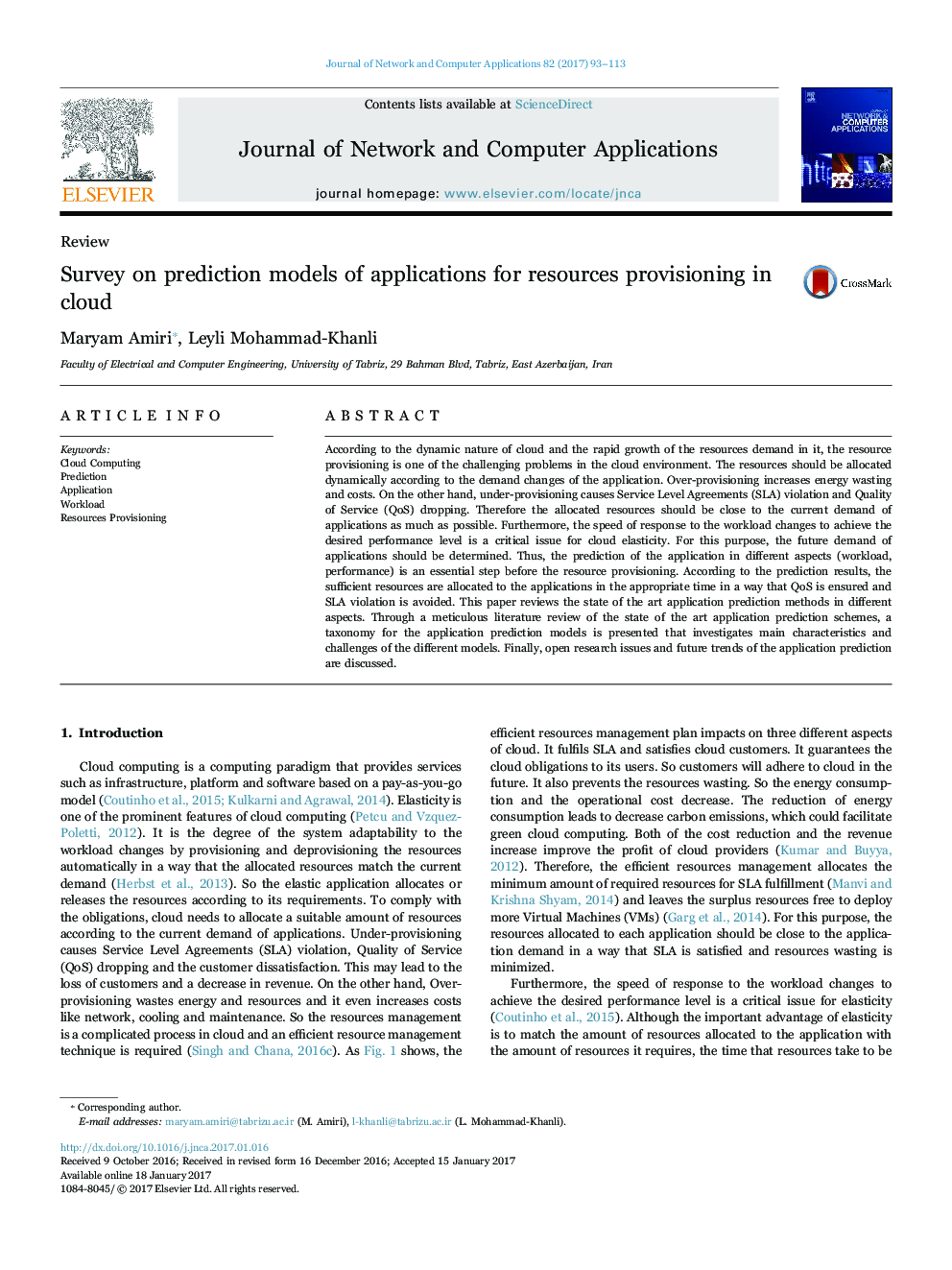| Article ID | Journal | Published Year | Pages | File Type |
|---|---|---|---|---|
| 4956037 | Journal of Network and Computer Applications | 2017 | 21 Pages |
Abstract
According to the dynamic nature of cloud and the rapid growth of the resources demand in it, the resource provisioning is one of the challenging problems in the cloud environment. The resources should be allocated dynamically according to the demand changes of the application. Over-provisioning increases energy wasting and costs. On the other hand, under-provisioning causes Service Level Agreements (SLA) violation and Quality of Service (QoS) dropping. Therefore the allocated resources should be close to the current demand of applications as much as possible. Furthermore, the speed of response to the workload changes to achieve the desired performance level is a critical issue for cloud elasticity. For this purpose, the future demand of applications should be determined. Thus, the prediction of the application in different aspects (workload, performance) is an essential step before the resource provisioning. According to the prediction results, the sufficient resources are allocated to the applications in the appropriate time in a way that QoS is ensured and SLA violation is avoided. This paper reviews the state of the art application prediction methods in different aspects. Through a meticulous literature review of the state of the art application prediction schemes, a taxonomy for the application prediction models is presented that investigates main characteristics and challenges of the different models. Finally, open research issues and future trends of the application prediction are discussed.
Related Topics
Physical Sciences and Engineering
Computer Science
Computer Networks and Communications
Authors
Maryam Amiri, Leyli Mohammad-Khanli,
